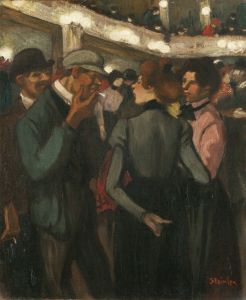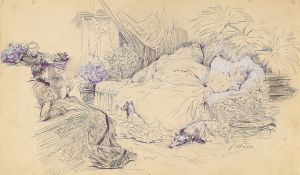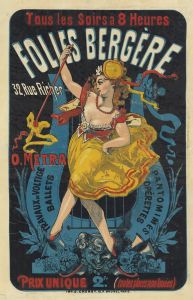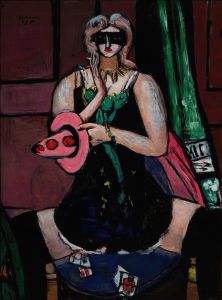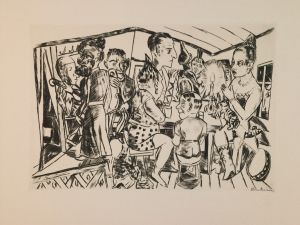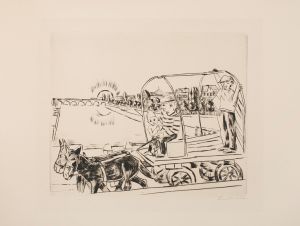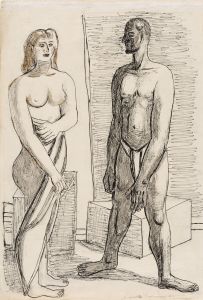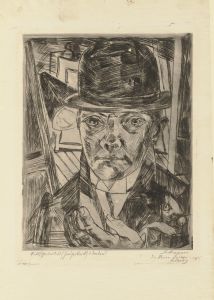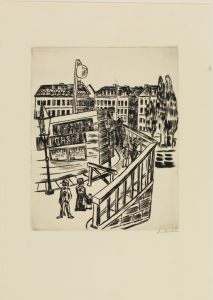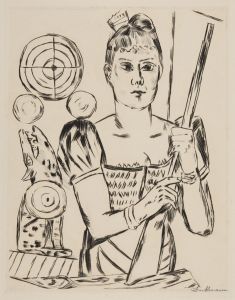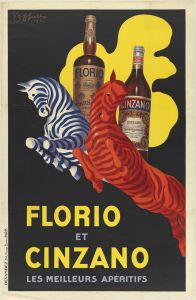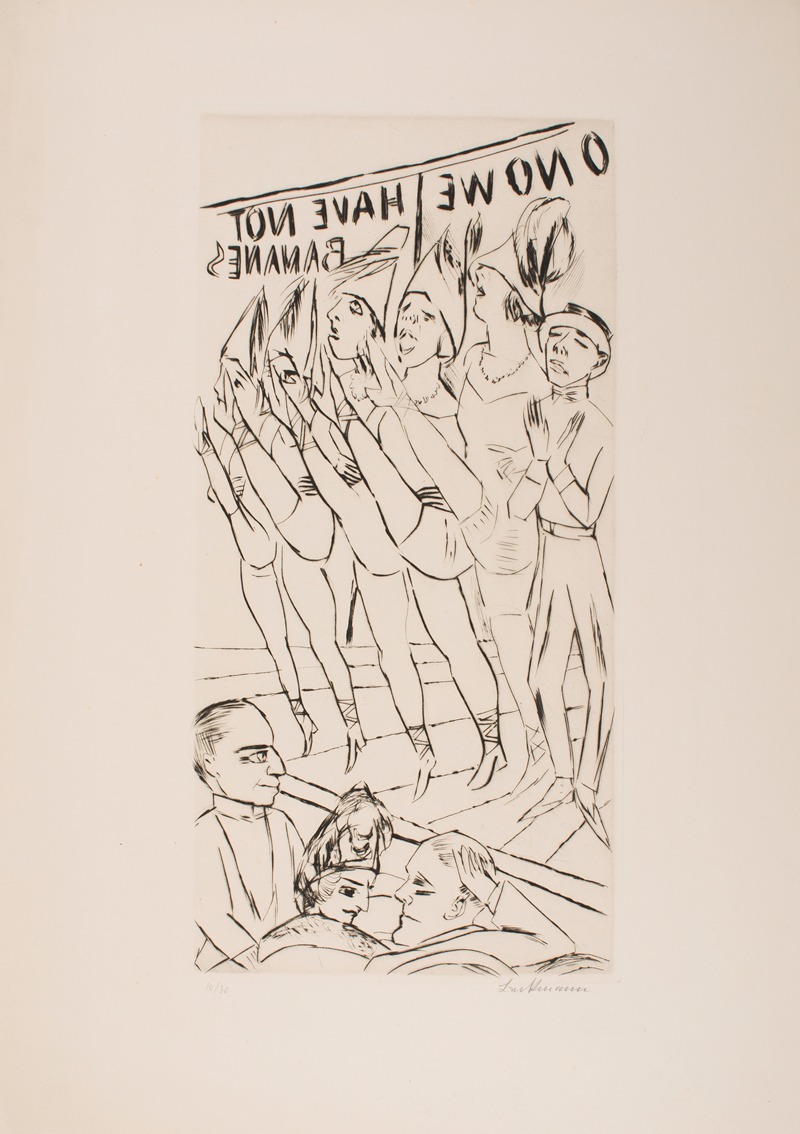
Varieté
A hand-painted replica of Max Beckmann’s masterpiece Varieté, meticulously crafted by professional artists to capture the true essence of the original. Each piece is created with museum-quality canvas and rare mineral pigments, carefully painted by experienced artists with delicate brushstrokes and rich, layered colors to perfectly recreate the texture of the original artwork. Unlike machine-printed reproductions, this hand-painted version brings the painting to life, infused with the artist’s emotions and skill in every stroke. Whether for personal collection or home decoration, it instantly elevates the artistic atmosphere of any space.
Max Beckmann's Varieté is a painting created in 1930 by the German painter and printmaker Max Beckmann, a leading figure of the New Objectivity (Neue Sachlichkeit) movement. The work is a striking example of Beckmann's mature style, characterized by bold lines, vivid colors, and a complex composition that reflects his interest in the human condition and the theatricality of modern life.
The title Varieté refers to variety theater, a popular form of entertainment in Europe during the late 19th and early 20th centuries. These theaters featured a mix of performances, including music, dance, acrobatics, and comedy, often presented in a lively and extravagant atmosphere. Beckmann was fascinated by the world of cabarets, circuses, and theaters, which he saw as microcosms of society, full of drama, tension, and human emotion. This theme recurs throughout his work, as he frequently depicted performers, audiences, and the interplay between them.
In Varieté, Beckmann captures the vibrant and chaotic energy of the variety theater. The composition is densely packed with figures, each rendered in his distinctive angular and expressive style. The painting features performers and spectators, blurring the line between the stage and the audience. This interplay reflects Beckmann's interest in the roles people play in society and the masks they wear, both literally and metaphorically. The figures are arranged in a compressed, almost claustrophobic space, emphasizing the intensity and immediacy of the scene.
Beckmann's use of color in Varieté is both dramatic and symbolic. He employs a rich palette of reds, yellows, and blues, creating a sense of dynamism and movement. The bold contrasts and sharp outlines give the painting a sense of tension and vitality, drawing the viewer into the bustling world of the theater. The fragmented composition and overlapping forms suggest a sense of disorientation, mirroring the complexity and unpredictability of modern life.
Varieté was created during a period of significant social and political upheaval in Germany, as the Weimar Republic faced economic instability and the rise of extremist ideologies. Beckmann's work from this time often reflects the anxieties and uncertainties of the era, and Varieté can be seen as a commentary on the fragility and absurdity of human existence. However, the painting also celebrates the resilience and creativity of the human spirit, as embodied by the performers and their art.
Today, Varieté is considered one of Beckmann's masterpieces and an important example of his exploration of theatrical themes. The painting is held in the collection of the Städel Museum in Frankfurt, Germany, where it continues to be admired for its technical brilliance and emotional depth.





